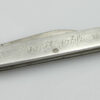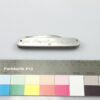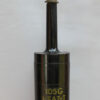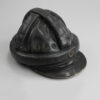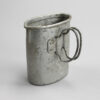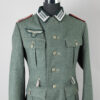Knife of a German prisoner of war from the Magnitogorsk camp
Inventory number: DPM 1.259
At first glance, the knife looks unremarkable. The neat, ornate inscription shows the owner’s name on one side: “Waldemar Zinser”. But the other side gives a clue to the history of this knife: “1945 Magnitogorsk 1948”. It refers to Waldemar Zinser’s captivity as a prisoner of war in Soviet POW camp 7617 near Magnitogorsk. Waldemar Zinser belonged to the 18th Panzergrenadier Division, with which he was taken prisoner on the Eastern Front at the end of the war. He arrived in Magnitogorsk after a 16-day train journey via a collection camp in Braunsberg.
The city of Magnitogorsk in the Urals is still located just inside the European part of present-day Russia. It was established as an industrial city in the 1930s and its steel industry made a significant contribution to the Soviet Union’s armaments production during the Second World War. Waldemar Zinser worked in the locksmith’s shop of a steelworks and secretly made this knife during his night shifts.
Despite, or perhaps because of, the hard work, many inmates were also involved in cultural activities. In Magnitogorsk, the prisoners founded a theater group, for which they built a special building, the “theater bunker”. It had 120 seats and the Soviet camp leadership also attended theater performances and singing evenings with their wives. The events broke up the monotony of everyday life in the camp and allowed the prisoners to forget their grief for a few hours. Even after his imprisonment, Waldemar Zinser kept in touch with his comrades for a long time.
The knife reads “1945-1948”, but Waldemar Zinser was only released in 1949, at the age of 42. The camp was disbanded in the same year.
Object of the month
(short) stories from the depot
Unfortunately, many objects cannot currently be shown in the exhibition for conservation reasons. Here you will find unusual objects and exciting stories of special pieces from the depot


